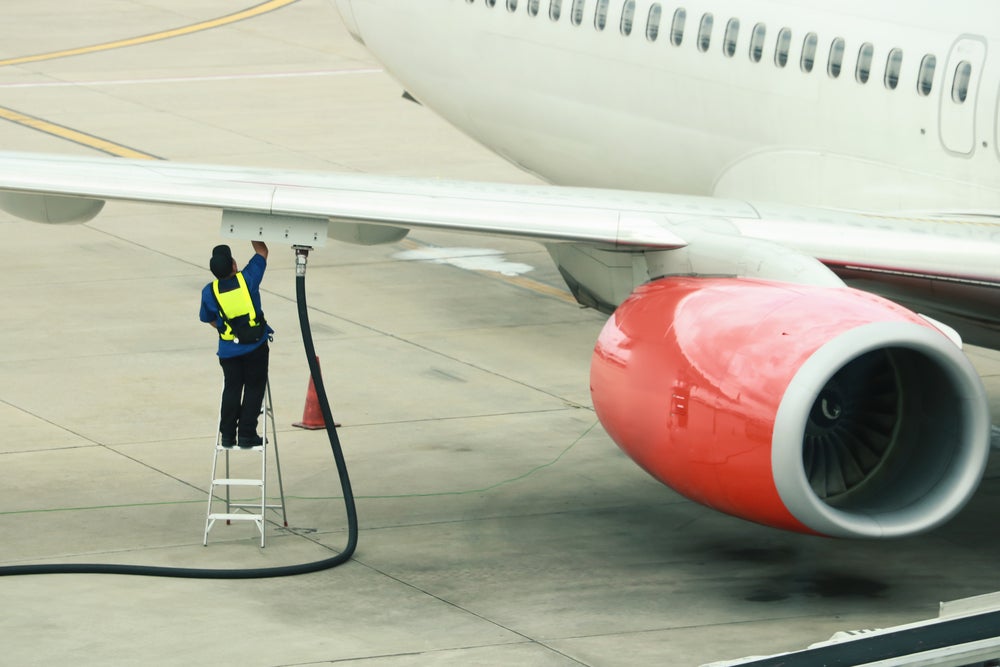The exponential growth in air travel over the last fifty years has made the aviation industry a key focus in the drive to achieve net zero emissions by 2050.
But it will take a concerted effort by policymakers and regulators as well as the industry to fast-track the essential transition to cleaner fuel.
Aviation accounts for over 2% of CO2 emissions. Adding in other harmful effects, such as soot particles and the warming effect of aircraft vapour trails, increases its overall negative environmental impact to around 3.5%.

Emissions have quadrupled since 1966, with 4%-5% growth annually since 2010, as low-cost airlines and infrastructure investment widened accessibility to air travel.
Despite climate concerns as well as disruption at many airports in 2022, it’s expected that over 4 billion passengers will choose air travel this year, resulting in flights being back to 86% of pre-pandemic levels in 2023.
SAF is the best decarbonisation solution
With these statistics in mind, in order to reduce the harmful impact of aviation on the environment, we must deploy fuels and technology that will drastically cut harmful emissions.

US Tariffs are shifting - will you react or anticipate?
Don’t let policy changes catch you off guard. Stay proactive with real-time data and expert analysis.
By GlobalDataPathways to achieving net-zero emissions in other sectors are well advanced; electric vehicles and renewable power are already scaling rapidly.
But because of aviation’s complex industry infrastructure and the long lifespan of aircraft, innovative technologies, such as hydrogen fuel cells and electric planes, cannot cut emissions within the necessary timeframe – although they may well contribute to longer-term solutions.
There is, though, a solution to hand: Sustainable Aviation Fuel (SAF) offers the best opportunity to sharply reduce aviation emissions in the near term. Made largely from forestry and agricultural waste, SAF can be safely dropped into existing jet engines and fuelling infrastructure, to potentially reduce carbon emissions by up to 80% compared with conventional jet fuel.
Significant economic and technological hurdles are blocking scale-up in the production and use of SAF.
Currently, regulations restrict SAF to 50% of fuel in most cases, requiring it to be mixed with conventional fuel for safety and technical reasons, but the 100% SAF target is within clear sight. But despite this potential – and plans to scale – right now, SAF accounts for a minuscule 1% of aviation fuel. Significant economic and technological hurdles are blocking scale-up in the production and use of SAF.
The major capital investment involved both in converting existing facilities to SAF production or building a new plant deters investment in this nascent technology, while for airlines, SAF is currently prohibitively priced at 3-5 times more than conventional jet fuel.
Industry is investing in SAF programmes
If these hurdles can be overcome, the aviation industry stands ready to ramp up the use of SAF to achieve emission targets and develop sustainable air travel.
Etihad Airlines’ ‘Greenliner’ programme is testing and promoting the use of SAF, as well as trialling other technologies and techniques that can reduce emissions.
This year Virgin Atlantic plans to make the first transatlantic flight powered entirely by SAF, cutting the flight’s carbon emission by 70%, with net zero emission to be achieved by an offsetting investment in carbon renewal technology.
Rolls Royce has run successful trials showing that 100% SAF can be safely used to power its current business jet engines.
SAF is on the verge of an exponential capacity and production ramp-up.
Airbus, whose aircraft are already certified to run on 50% SAF, recently signed an agreement with leading renewable fuels producer Neste to jointly advance the production and uptake of SAF with the goal of reaching 100% certification by the end of this decade.
On the supply side, SAF production is rising to meet growing demand, more than tripling in 2022 to circa 300 million litres.
The International Air Transport Authority (IATA) is optimistic that, with the right supporting government policies, SAF is “on the verge of an exponential capacity and production ramp-up”, which could lead to an annual production of 30 billion litres by 2030.
If this happens, the IATA expects that SAF will account for 65% of the reduction in the airline industry’s emissions necessary to meet 2050 targets. This would require the production of 450 billion litres of SAF annually by 2050 – a huge leap from the current global annual production of 125 million litres.
SAF development must accelerate
Governments, too, are recognising SAF as the viable route to cutting aviation emissions.
In the US, the federal government “SAF Grand Challenge” has the goal of scaling SAF production to 3 billion gallons per year by 2030 and 35 billion by 2050. And the EU has mandated that fuel supplied to airports must be 2% SAF by 2025, increasing every five years to reach 63% by 2050.
These are the essential goals if the aviation industry is to meet its net zero emission target by 2050.
But there must be a dramatic change in the pace of SAF development if they are to be achieved. This will not happen unless there is a comprehensive and coordinated effort by governments and regulators to incentivise the production and use of SAF.
There must be a dramatic change in the pace of SAF development if net-zero targets are to be achieved.
Tax incentives for production and price stability mechanisms, similar to those used by some states to develop nuclear and renewables projects, are among many policy and financial incentives that can turbo-charge the development of SAF.
Governments around the world have agreed on the 2050 net-zero goals and are supporting their economies in transitioning to renewable sources of fuel and energy. Now, they need to recognise that the same must be done to enable aviation to decarbonise with SAF.
With the right incentives and support in place, aviation can make the switch to sustainable flying and play its part in achieving global net zero emissions by 2050.





